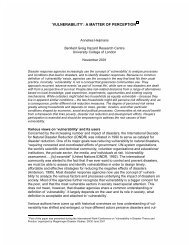SUPER CYCLONE SIDR 2007 Impacts and Strategies for ... - nirapad
SUPER CYCLONE SIDR 2007 Impacts and Strategies for ... - nirapad
SUPER CYCLONE SIDR 2007 Impacts and Strategies for ... - nirapad
Create successful ePaper yourself
Turn your PDF publications into a flip-book with our unique Google optimized e-Paper software.
Ministry of Food <strong>and</strong> Disaster Management<br />
Table 3.2: No. of Damaged Latrines in 12 Affected Districts<br />
District Barisal Jhalokathi Pirojpur Bhola Patuakhali Barguna Bagerhat Satkhira Khulna Shariatpur Madaripur Gopalganj Total<br />
Latrine 5,631 1,680 1,505 1,300 1,750 1,060 22,000 175 1,912 1,540 1,467 15,259 55,279<br />
Response<br />
According to Department of Public Health Engineering (DPHE) about 12,984 of 221,039 total<br />
numbers of mechanised water sources (tube-wells, rain water harvesters, pond s<strong>and</strong> filter etc.) were<br />
affected of which 10,951 (84%) have been rehabilitated. Total 8,082 (82%) out of 9,289 surface water<br />
ponds available <strong>for</strong> safe drinking water have been reported as being cleaned. In addition, 25 mobile<br />
water treatment plants are currently operational providing an average 2,000 litres per hour potable<br />
water each.<br />
• Total 354 new tube-wells are installed through contracting <strong>and</strong> WatSan committees.<br />
• A total of 145,831plastic jerrycans have been distributed in worst <strong>and</strong> badly affected districts.<br />
• Total 6.3 millions of Water Purification Tablets (WPT) distributed among the affected people.<br />
• About 19 thous<strong>and</strong> kg of bleaching powder <strong>and</strong> 59,015 kg of lime were distributed <strong>for</strong><br />
decontamination of water sources.<br />
• About 17 thous<strong>and</strong> kg of Alum was distributed to purify drinking water.<br />
• About 76 thous<strong>and</strong> litres of bottled water distributed among the affected people to meet their<br />
immediate need of drinking water.<br />
• Some 38 HDP mobile tanks are being used in Khulna district to supply water in the cyclone<br />
affected areas.<br />
• US army team purified <strong>and</strong> supplied drinking water among the affected people using Specialised<br />
Reverse Osmosis (RO) process of water purification.<br />
• The supply of water containers appears to be up to 500,000, consisting of 200,000 from the<br />
International Federation of Red Cross <strong>and</strong> Red Crescent Society (IFRC), 100,000 from the United<br />
Nations Children’s Fund (UNICEF) <strong>and</strong> around 200,000 from other sources.<br />
<strong>Strategies</strong><br />
The official reports of DPHE indicate the estimation of the short term <strong>and</strong> long term rehabilitation<br />
water <strong>and</strong> sanitation systems. The report shows that about 18 million US dollars are required to<br />
excavate <strong>and</strong> re excavate of ponds including l<strong>and</strong> acquisition <strong>and</strong> dewatering of damaged ponds. Total<br />
1.28 million USD is required <strong>for</strong> rehabilitation of Pond S<strong>and</strong> Filter (PSF) System, 28.5 million USD<br />
<strong>for</strong> tube well installation <strong>and</strong> repairing. About 30 million USD is required <strong>for</strong> the installation of new<br />
latrines <strong>and</strong> repairing of damaged latrines.<br />
Short-term<br />
• Bottled water is a temporary but necessary support.<br />
• Dewatering of ponds <strong>and</strong> removal of sludge be<strong>for</strong>e the monsoon<br />
• Excavation <strong>and</strong> re excavation of ponds<br />
• Establishment of water quality testing <strong>and</strong> monitoring system.<br />
• The installation of deep/shallow tube-wells in the worst affected upazillas i.e. Morelgonj,<br />
Kathalia, Mathbaria, Bh<strong>and</strong>aria, Kalapara pourashava, Galachipa, Betagi <strong>and</strong> Amtali is needed.<br />
• In places where tube-wells are not feasible, water treatment plants need to be installed, especially<br />
in the small river ports, near 30 ferry ghats (30 plants) of the upazilas of Mongla, Sarankhola<br />
char, Kalapara, Patharhata <strong>and</strong> Bamna.<br />
• Strengthening of hygiene promotional activities <strong>and</strong> school sanitation programme.<br />
Page 14












